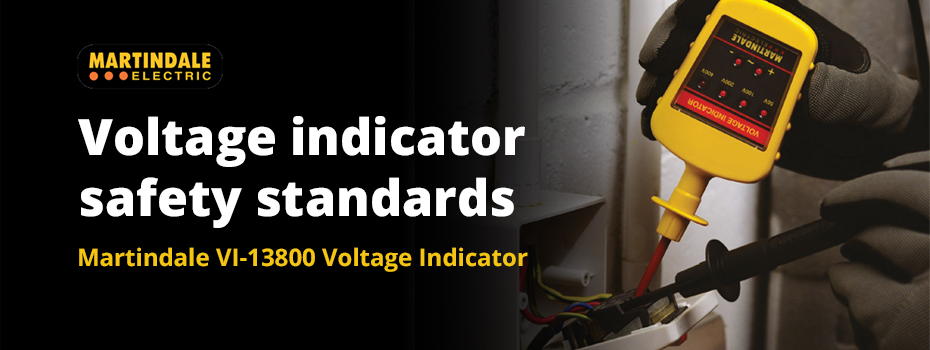 In May 2013, a new safety standard, BS EN 61243-3:2010, came into effect. It required voltage indicator manufacturers to incorporate a different method of limiting current in the event of cable damage. To ensure compliance with this revised British and European standard, which has been included in every subsequent edition of HSE’s GS38 Guidance Note, Martindale has updated their VI-13700/2 Two-Pole Voltage Indicator.
Continue reading →
In May 2013, a new safety standard, BS EN 61243-3:2010, came into effect. It required voltage indicator manufacturers to incorporate a different method of limiting current in the event of cable damage. To ensure compliance with this revised British and European standard, which has been included in every subsequent edition of HSE’s GS38 Guidance Note, Martindale has updated their VI-13700/2 Two-Pole Voltage Indicator.
Continue reading →Safe Isolation
-
Martindale Meets Voltage Indicator Safety Standards
 In May 2013, a new safety standard, BS EN 61243-3:2010, came into effect. It required voltage indicator manufacturers to incorporate a different method of limiting current in the event of cable damage. To ensure compliance with this revised British and European standard, which has been included in every subsequent edition of HSE’s GS38 Guidance Note, Martindale has updated their VI-13700/2 Two-Pole Voltage Indicator.
Continue reading →
In May 2013, a new safety standard, BS EN 61243-3:2010, came into effect. It required voltage indicator manufacturers to incorporate a different method of limiting current in the event of cable damage. To ensure compliance with this revised British and European standard, which has been included in every subsequent edition of HSE’s GS38 Guidance Note, Martindale has updated their VI-13700/2 Two-Pole Voltage Indicator.
Continue reading → -
Safe Isolation: Staying A.L.I.V.E
 It has been sixteen years since Michael Adamson, an experienced 26-year-old electrician, tragically died after cutting a cable marked “NOT IN USE”. The cable had been wired into a distribution board and was not safely isolated; Michael suffered a fatal electric shock. Over the years, leading bodies, such as the Electrical Safety Roundtable, have worked to develop procedures and protocols designed to prevent injuries and fatalities caused by a lack of safe isolation. Now, Martindale has developed an easy-to-follow and memorable safe isolation process: A.L.I.V.E.[1]
Continue reading →
It has been sixteen years since Michael Adamson, an experienced 26-year-old electrician, tragically died after cutting a cable marked “NOT IN USE”. The cable had been wired into a distribution board and was not safely isolated; Michael suffered a fatal electric shock. Over the years, leading bodies, such as the Electrical Safety Roundtable, have worked to develop procedures and protocols designed to prevent injuries and fatalities caused by a lack of safe isolation. Now, Martindale has developed an easy-to-follow and memorable safe isolation process: A.L.I.V.E.[1]
Continue reading → -
What Are CAT Ratings?
 In summary, CAT ratings are overvoltage categories; they are safety ratings that indicate the types of electrical environments in which test and measurement instruments can be safely used. Understanding these categories is crucial to ensuring that you select the correct tool when working on an electrical installation.[1]
Continue reading →
In summary, CAT ratings are overvoltage categories; they are safety ratings that indicate the types of electrical environments in which test and measurement instruments can be safely used. Understanding these categories is crucial to ensuring that you select the correct tool when working on an electrical installation.[1]
Continue reading →
Page
Previous
Page 1 of 1
Page
Next


